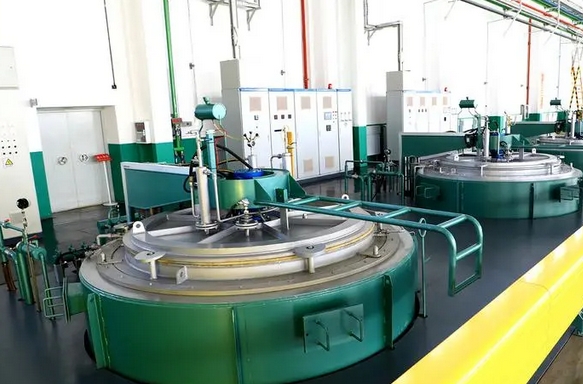Gas Nitriding in Machinery: Practical Techniques
Time:2023-11-03 21:10:41 Source:未知 Click:次
Gas nitriding is a surface strengthening technique widely used in various fields of machinery manufacturing. By placing steel parts in a nitrogen-containing atmosphere, a hard and wear-resistant nitride layer is formed on the surface, thereby improving the durability and service life of the parts. This article will explore the application areas, material selection, and practical techniques of gas nitriding, and further understand its practical applications through case analysis.
I. Application Areas of Gas Nitriding
1. Automotive industry: Gears, bearings, and other components in automotive engines and transmissions often need to withstand high temperature, pressure, and speed conditions, so they have high requirements for wear resistance and fatigue resistance. Gas nitriding can effectively improve the performance of these components.
2. Aerospace industry: Engine components, turbine blades, and other parts of aircraft and rockets also need to have extremely high wear resistance and fatigue resistance. Gas nitriding is an effective means to achieve this goal.
3. Mold manufacturing: Molds need to withstand high temperature, pressure, and wear during use, so they need to have high hardness and wear resistance. Gas nitriding can improve the service life of molds.
II. Material Selection
Gas nitriding is mainly suitable for alloy steels containing elements such as chromium, molybdenum, and aluminum. Chromium element can improve the hardness and stability of the nitride layer, molybdenum element can improve the toughness of the nitride layer, and aluminum element can improve the adhesion of the nitride layer. In addition, it is also necessary to consider the heat treatment performance and mechanical properties of the material.
III. Practical Techniques
1. Pretreatment: Before gas nitriding, preheating treatment should be carried out to eliminate internal stress and prevent cracking during nitriding.
2. Temperature control: Temperature control during nitriding is very important. Generally speaking, the higher the nitriding temperature, the thicker the formed nitride layer, but excessive temperature may cause part deformation or fracture.
3. Time control: The choice of nitriding time is also very important. Generally speaking, the longer the nitriding time, the thicker the formed nitride layer, but excessive nitriding time may cause overnitriding of the part, affecting its performance.
IV. Case Analysis
A car company's engine gearbox experienced severe wear after a period of use, which was caused by insufficient wear resistance of the gears. Therefore, the company decided to treat the gears with gas nitriding technology. After pretreatment, nitriding, and post-treatment, a hard and wear-resistant nitride layer was formed on the surface of the gears. After a period of trial use, the gear wear was significantly improved, and the service life was greatly improved.
In summary, gas nitriding is an effective surface strengthening technique that can significantly improve the wear resistance and service life of parts. However, to achieve ideal results, it is also necessary to select suitable materials, master correct process parameters, and carry out strict quality control.


